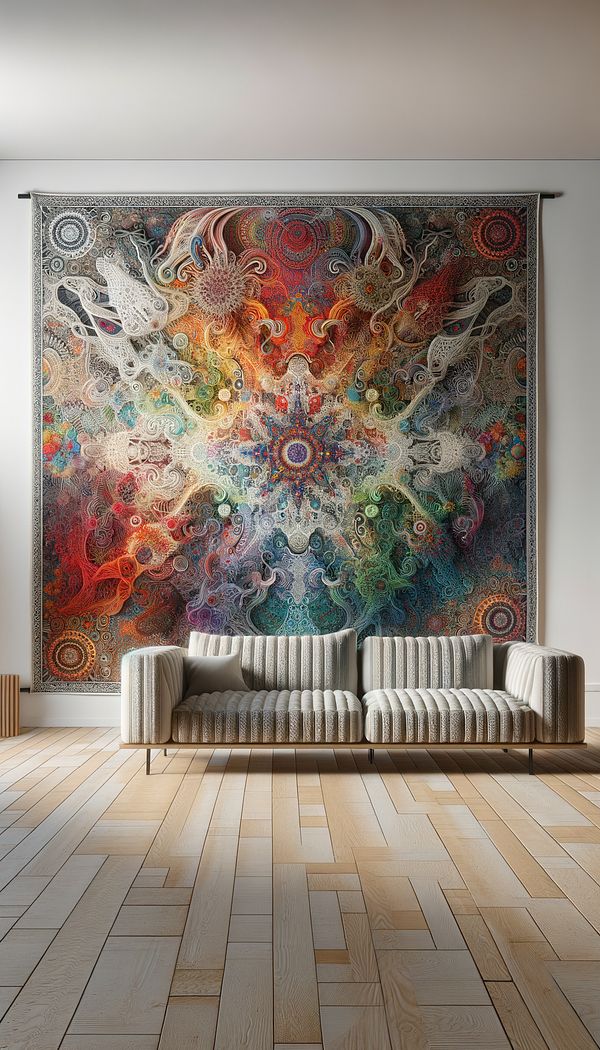What is a Tapestry?
A heavy textile handwoven with rich, colorful designs or scenes, often used as a wall hanging.
Description
Tapestry is a form of textile art that has been used for centuries to depict intricate scenes and designs. Crafted on a loom, tapestries are traditionally made by weaving colored weft threads through plain warp threads to create detailed pictorial images. The history of tapestry is rich and varied, with the art form playing a significant role in both religious and secular contexts throughout the ages.
Tapestries were not only cherished for their aesthetic appeal but also for their practical uses. In medieval and renaissance times, they served as insulating wall hangings in castles and churches, helping to keep rooms warm. Today, while still appreciated for their beauty, tapestries are often used in interior design as a means to add depth, texture, and color to a space.
The process of creating a tapestry is time-consuming and requires a considerable amount of skill, making each piece unique. Modern tapestries can vary in style, from recreations of historic pieces to contemporary artworks, and are made using a variety of materials including wool, cotton, and synthetic fibers.
Usage
In the realm of interior design, tapestries can be used to add a focal point to a room, incorporated into a gallery wall, or used to bring warmth and texture to a space. They are often chosen for their ability to add a touch of elegance and historical depth to modern interiors.
FAQs
-
Can tapestries only depict historical scenes?
No, tapestries can depict a wide range of subjects including abstract designs, landscapes, modern art, and more.
-
Are tapestries only used as wall hangings?
While tapestries are commonly used as wall hangings, they can also be used as throws, tablecloths, and in other decorative ways.
-
How do you care for a tapestry?
Caring for a tapestry typically involves regular dusting and avoiding direct sunlight to prevent fading. Some may require professional cleaning, especially if they are antique or made of delicate materials.
-
What makes a tapestry different from a regular wall hanging?
Tapestries are distinct in their intricate woven designs and the techniques used to create them, offering a depth and richness not typically seen in printed or other types of wall hangings.
Practical Application
When incorporating a tapestry into your interior design, consider its color palette and how it complements or contrasts with the rest of your decor. Tapestries can serve as an anchor or a statement piece, so assess the scale and positioning to ensure it enhances your space. For an unexpected touch, consider hanging a tapestry in a modern frame or using it to create a dynamic backdrop for other decorative items.
-
Decorative Techniques322 articles
-
Art & Sculpture30 articles
-
Wall & Ceiling Treatments35 articles
-
Materials & Textiles360 articles
-
Mission StyleMission Style refers to a design movement emphasizing simple, sturdy construction with minimal ornamentation.
-
Early RenaissanceThe Early Renaissance is a period in art and architecture characterized by a revival of Classical influences and a focus on symmetry, proportion, and harmony.
-
Open PlanOpen plan refers to a floor layout without walls or barriers between different living spaces.
-
EbonizeA method of darkening wood to mimic the appearance of ebony.
-
IntarsiaIntarsia is a form of wood inlaying that involves fitting together pieces of wood of varying shapes, colors, and species to create intricate patterns or images.
